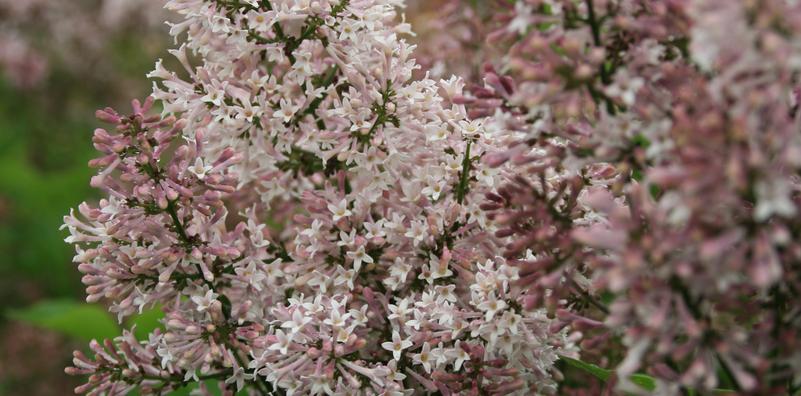Long Live the Lilac
May truly gifts us the cusp of springtime blooms: a mixture of yellow and purple irises, multi-hued Baptisia, prehistoric and obscure Calycanthus, perennial meadow sages and icy blue Amsonia flowers welcome the flood of seasonal colors still yet to make an appearance. Of notable spring-flowering woody shrubs, lilacs may be some of the most recognizable to even the greenest of plant novices. With all of the plant selections available these days, it’s easy to forget that classic ornamental plants like the standard lilac have maintained a critical role in landscape and garden design for centuries.
In an attempt to revitalize our inherent, human love for lilacs, Lilac Sunday was initiated. Falling on May 11th, various organizations celebrate their lilac collections at the height of their bloom time: Harvard’s Arnold Arboretum hosts over 400 lilacs, spanning across 171 taxa, 133 cultivars, and a collection of parent species responsible for producing many of today’s hybridized lilac selections.
The Arboretum has been hosting Lilac Sunday since 1908, and encourages visitors to picnic on the grounds while they enjoy the sights and scents of their expansive lilac collection. The city of Rochester, NY, similarly hosts a Lilac Festival during the weeks leading up to and following Lilac Sunday, which has been celebrated in Highland Park since 1905. Maybe you’ve noticed that the early 1900s seemed to be an ideal time to be a lilac, and there's a good reason for that. The century prior, French horticulturist Victor Lemoine perfected the hybridization of double-flowering lilacs, burgeoning demand for the fragrant, floriferous shrubs and allowing for the continued expansion of hybrid lilac selections. Lemoine’s historic double-flowering selections include ‘President Grévy’ and ‘Edith Cavell’. Not long after, in 1916, Highland Park’s own John Dunbar successfully developed the blue-flowering ‘President Lincoln’ lilac, a favorite within the Rochester’s conservancy, and boasted by the Arnold Arboretum as “among the most showy shrubs” throughout their collection. Currently, the International Lilac Society officially lists seven distinct lilac flowering colors, categorized by roman numerals: I (white), II (Violet), III (Blue), IV (Lilac), V (Pink), VI (Magenta), and VII (Purple).
The lovely (or abhorrent, depending on your olfactory preferences) characteristic fragrance of lilac flowers makes these shrubs fantastic additions to sensory and children’s gardens, as well as healing gardens where their scent can be utilized in aromatherapy. Adding Syringa to a medicinal garden should also be considered - lilacs have historically been utilized in traditional Eastern medicine as vermifuges and antimicrobials, and recent lilac lab studies have shown valuable phytocompounds responsible for these remedial effects. Iridoids and lignans are the compounds found in highest concentrations within the Syringa genus, both which have collectively been proven to possess both antioxidant and antihypertensive properties (Su, et al. 2015). Bark extracts appear to be the most highly concentrated beneficial zones of Syringa species, which will definitely take some thoughtful (read: experienced) processing. Better to just enjoy it as the timeless landscape ornamental that it always has been and always will be, instead!
Although our lilac selection is a little on the lighter side at the moment, make sure to hit the “GET NOTIFIED” feature on our availability to be alerted when our future crops of the following selections make it to inventory:
S. meyeri ‘Palibin’ #3 - ready soon… keep an eye out!
S. meyeri ‘Palibin’ #7 - ready 7/15
S. patula ‘Miss Kim’ #7 - ready 7/15
S. reticulata ‘Ivory Silk’ #20 - ready 8/1
Syringa x Bloomerang® Dark Purple #7 - ready 7/15
See all our Woody Ornamentals

Syringa patula Miss Kim

